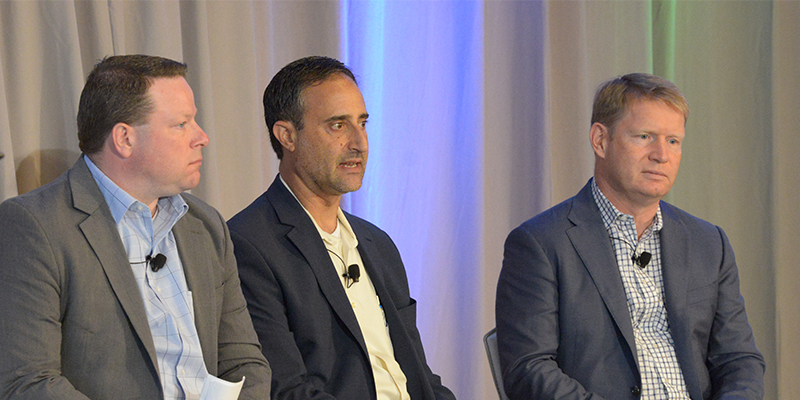Euclid Square Mall outside Cleveland, Ohio, was a thriving center of the community in the 1970s and 1980s. By the 1990s, it was one of the nation’s notorious “abandoned malls” and the site was prime for redevelopment. Enter the teams from Seefried Industrial Properties, Langan Engineering & Environmental Services, and The Whiting-Turner Contracting Company, who came together at I.CON East 2019 to walk through the project’s redevelopment from a dead mall into a modern fulfillment center.
One of the key aspects to the project was understanding the land components that made up the parcel. Although the mall appears to be situated on one contiguous block of land, it actually spans across 10 parcels that have various easements. A positive aspect of Euclid Square: the land was under a single ownership, which isn’t always the case depending on the anchor tenants. Outparcels surrounding the mall – like restaurants, banks and a strip mall – had rights to the ring road that surrounded the parking lot, as well as the utilities, so agreements had to be made during the redevelopment plans.
Fully investigating the environmental risks before demolition was at the top of the list for the redevelopment partners. Before its four decades as a shopping mall, the site had been home to the Chase Brass Mill from 1929-1975. Seefried Industrial Properties hired geotechnical engineers to explore what was happening under the slab of the mall and, to their surprise, they found an additional slab and a basement four feet below the mall slab. While they didn’t identify significant environmental concerns, it gave the company a full appreciation for the health and viability of the site.
Seefried proceeded with a phased cleanup and engaged a certified professional who created documentation explaining to the capital partner the detailed cleanup and environmental remediation, which met the standards for industrial property without going to the expense and time commitment of achieving residential standards, which weren’t necessary for the site.
Traffic considerations played a major role in the redevelopment strategy. Langan recommended widening lanes and proposed traffic light changes that improved traffic flows to patterns more aligned with employee shift work instead of the continuous movement of shoppers entering and leaving the mall.
The panel agreed that the most important part of the redevelopment process was engaging with the local community, from the municipal government to the mayor’s office to the surrounding residents. The municipality wanted something done with the blighted mall, and the team wanted their support during the entitlement process and beyond.
The site was bordered on the south by residential neighborhoods, which was also the side of the facility that had loading dock facilities. Seefried completed a sound study that showed some decibels that were higher than the industry standard but still within reasonable levels. Nevertheless, the company took on the expense of constructing a sound wall to shield residents during the project construction, acting in good faith during development rather than having to react later to complaints.
The group also considered the workforce of the facility and their modes of transportation during cold, snowy Cleveland winters. They worked with regional transit authority to extend the public bus line directly onto the property, allowing employees to avoid a three-quarters of a mile walk from the stop to the project entrance.
The project yielded 3,000 jobs through construction and permanent positions, and the panel agreed that there’s not much about the redevelopment process that they would change about the engineering or structural components of the project.
This post is brought to you by JLL, the Social Media and Conference Blog sponsor of NAIOP’s I.CON East: The Industrial Conference. Learn more about JLL at www.us.jll.com or www.jll.ca.















